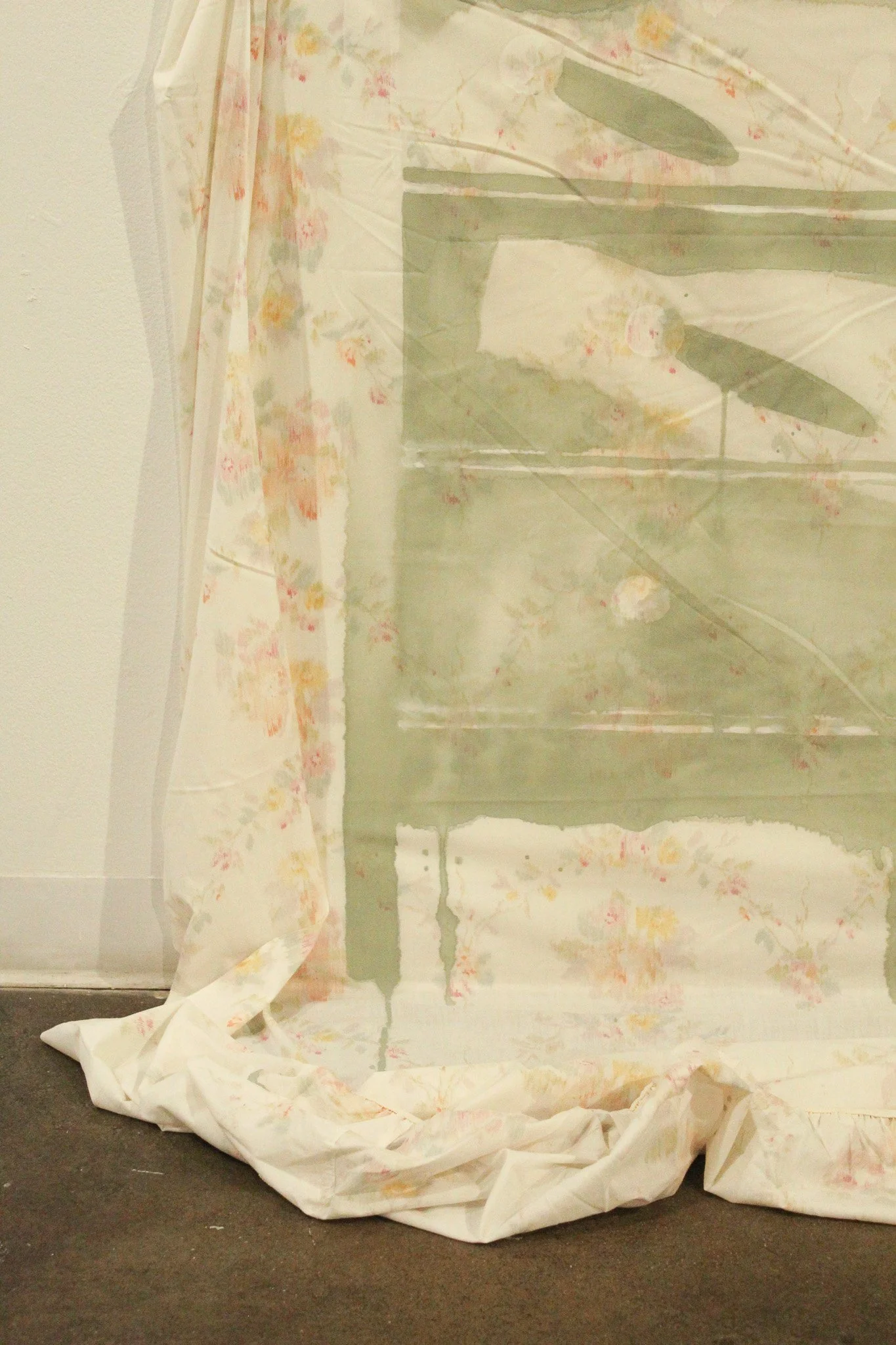Artist Statement
Spending part of my childhood moving across the U.S. and part of it in a small town in the country, my creative investigations stem from a consciousness of home, inheritance, restoration, and permanence. I think of my practice as somewhat circular, navigating the ethereal regions of memory and spirituality, then grounding in the tangible, touchable everyday life. Visually, my work plays on this tension — delicate, tight renderings pull to the earth airy palettes and soft washes. Salvaged fabrics, worn supple by years of use, are segmented and stretched; planes of visualization created by layers of paper and transparent fabrics overlap, shift, and mingle; pencil and paint, lines and stained, shadow and light, work to recreate the tension of the physical and spiritual, the now and the then and the not yet. In my most recent work, I investigate the coexistence of the mundane and the sacred — why are we sometimes arrested by the beauty of the most common thing (the playful scatter of leaves on a sidewalk, the slanting lines of light on a bedspread)? What is that intangible, wonderful something that is there in that space and moment? Through my practice, I seek to notice, extract, and recontextualize these common everyday occurrences, extending them beyond their fleeting life. This “paying attention to what I pay attention to” has led me to explore how art can function as a mode of restoration. I investigate how delicate renderings, subtle hue shifts, storied materials, and minimal compositions can create space for pause. Through my work, I strive to embody what slow-artist and activist Makoto Fujimura describes as a “citizen artist,” navigating across personal and societal rifts through generative work that invites pause and contemplation. The slow read of my work and the resultant space for contemplation enacts the theory that mindfulness can lead to change.





